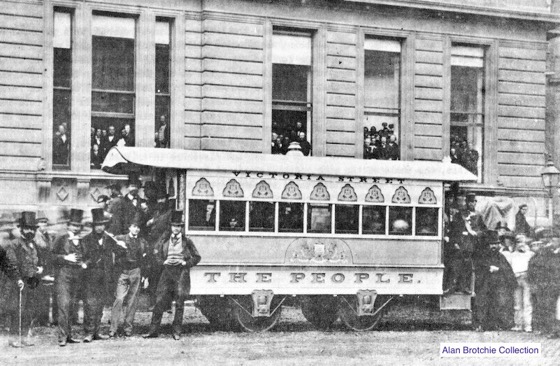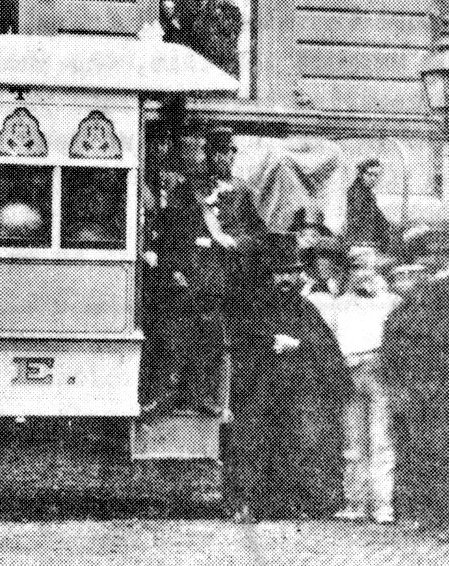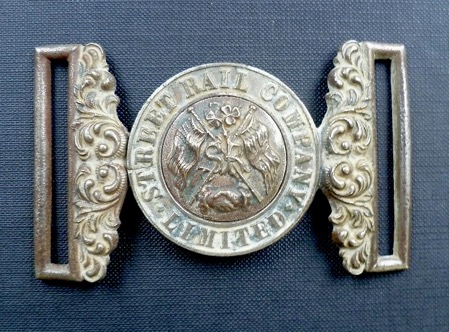Street Rail Company Limited
(Marble Arch Street Railway; Surrey Side Street Railway; Westminster Street Railway)
Summary
Several photographs of the above systems have survived, as well as contemporary illustrations (engravings and artists' impressions), so we can be reasonably sure that staff working these tramways wore single-breasted jackets with metal buttons (almost certainly comprising the full company title and a contrived UK-USA friendship device — see link) and tall kepi-style caps; the latter probably carried a large metal badge (pattern unknown). A wide diagonal leather strap — like a bandolier — was also worn, possibly to carry a satchel or money bag. Staff also wore a metal belt clasp containing the same title and device used on the buttons (see below).
All three of these early street railways (the first trams in London) were promoted by American entrepreneur George Francis Train, the man behind the first true street tramway in the British Isles (Birkenhead Street Railway Company), as well as a line in Darlington (Darlington Street Railway) and one in Stoke (Staffordshire Potteries Street Railway). Staff working all these lines are known to have worn uniforms (of Oxford grey, and likened by contemporary commentators to those worn by the Rifle Brigade), so the photograph below is entirely consistent with Train's approach to staff uniforms on the other systems he was involved in.
For a detailed history of early street railways, including George F Train's London lines, see: 'Pioneers of the Street Railway in the USA, Street Tramways in the UK…and elsewhere' by John R Stevens and Alan W Brotchie; Stenlake Publishing Ltd (2014).
Images
Horse tram drivers and conductors
What would now be termed a 'publicity shot', taken near the Westminster terminus of Train's Victoria line on the opening day, 15th April 1861.
A blow-up of the above photo showing the conductor, who is clearly wearing a military-style uniform with a tall kepi-style cap, and a prominent metal belt clasp, almost certainly the same pattern as illustrated below.
Street Rail Company belt clasp — nickel. The title and device are the same as that used on the buttons (see link). The components which attach the clasp to the leather belt at each side are a standard British Military pattern of 1855, suggesting that the makers used what was already available, so that only the centre piece had to be designed from new. Author's Collection.